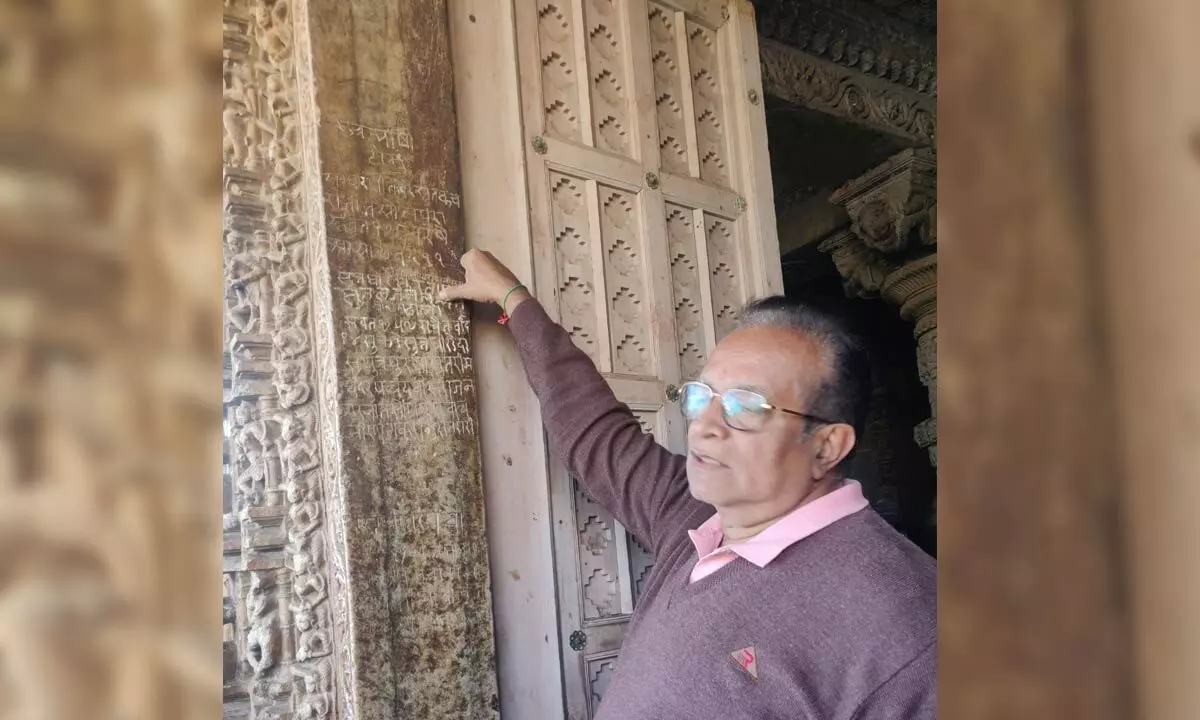Inscribed in Stone: The Timeless Importance of Epigraphy in India

Epigraphs, etched onto stone or other durable materials, are crucial in India's rich cultural and historical heritage
Epigraphs, etched onto stone or other durable materials, are crucial in India's rich cultural and historical heritage. They serve as invaluable repositories of information, providing a window into the past that transcends written history. Epigraphy plays a pivotal role in unraveling the mysteries of ancient civilizations and understanding the evolution of societies.
Epigraphy stands as a testament to India's diverse and illustrious history, and concerted efforts in preservation, technological innovation, and public awareness can ensure that the silent stones continue to speak to us across the ages, preserving the legacy of a nation steeped in history.
Epigraphs act as guardians of cultural identity, preserving the thoughts, beliefs, and achievements of past generations. They provide a tangible connection to the cultural roots of a society and help decipher ancient scripts, which have faded into obscurity. Epigraphs also serve as firsthand historical documents, offering insights into political, social, and economic structures of bygone eras. They also play a crucial role in establishing chronologies and dating historical events by examining the context, language, and style of inscriptions.
Inscriptions are often found on architectural marvels, helping researchers understand the purpose, patronage, and cultural significance of these structures. However, many inscriptions across India face threats from environmental factors, vandalism, and neglect. Technological advancements have breathed new life into the field of epigraphy, such as high-resolution imaging and 3D scanning, making it easier to study and document inscriptions without causing damage to the original artifacts.
Institutional support, such as the Epigraphy Branch of the Archaeological Survey of India, has provided a platform for scholars and researchers to collaborate. However, more investment and support are needed to enhance research capabilities and expand the scope of epigraphic studies. Public awareness about the significance of epigraphy is crucial for its continued preservation.
According to Dr. T. Ravi Shankar, a former Director of epigraphy at the Archaeological Survey of India (ASI) in Mysuru, there is a scarcity of specialists in the field of epigraphy. In comparison to other regions in the nation, the southern portion of India has a higher number of independent experts. Epigraphy is geographically localised, requiring professionals to possess a comprehensive grasp of the language and dialect spoken during that specific time period. The states of Bihar, Madhya Pradesh, and Uttar Pradesh exhibit a diverse range of dialects. Additionally, there is a limited number of epigraphers who possess the expertise to decipher the extensive collection of unpublished and unencoded inscriptions in these areas. Remarkably, there is now a lack of an epigraphy specialist who has the expertise to comprehend and decipher the inscriptions of Manipur. The linguistic dialect used four millennia ago differs from the contemporary Manipuri language. Epigraphy serves as the primary catalyst for commencing archaeological endeavours, although there is a notable dearth of knowledge and motivation for training and subsequent research. No institution in the nation has established a dedicated exhibition for epigraphy. Epigraphy necessitates a multidisciplinary approach that encompasses a comprehensive study of history, mythology, language, and epigraphy itself. Furthermore, there is a significant deficiency in the teaching personnel and trainers.
Epigraphy and
New Education Policy
Epigraphy can be integrated into new education policies to enhance learning, foster historical awareness, and develop critical thinking skills. Strategies include embedding epigraphic evidence in history curriculum across different periods and civilizations, using inscriptions as primary sources for language study, encouraging collaborative projects, and utilizing digital tools for interactive activities. Pedagogical approaches include active learning, digital tools, community engagement, teacher training, resource allocation, and assessment and evaluation. Interactive activities can engage students with inscriptions beyond textbook readings, while digital tools can enhance visualization and exploration. Community engagement can be achieved by partnering with local museums, historical societies, or archaeological sites to organize field trips, workshops, or guest lectures.
Policy considerations include teacher training, resource allocation, and assessment and evaluation strategies. Teacher training should equip educators with the necessary skills to effectively integrate epigraphy into their curriculum. Resource allocation should be allocated for acquiring epigraphic materials, funding field trips, and supporting collaborative projects. Assessment strategies should go beyond traditional tests and essays, involving projects, presentations, or portfolios that showcase students' understanding of epigraphic evidence and their ability to interpret its historical significance.
By implementing these strategies, policymakers can create a new educational landscape where epigraphy becomes a valuable tool for engaging all students with the rich tapestry of human history and culture. The specific approaches will depend on the educational context, resources available, and the specific goals of the new policy. Recognizing the potential of epigraphy to enhance learning and foster critical thinking can lead to a more engaging and enriching educational experience for all.
As custodians of cultural heritage, it is our shared duty to preserve and protect epigraphs, which serve as physical connections to India's rich and varied history. These inscriptions allow us to decode ancient scripts and get direct insights into past periods. Notwithstanding the challenges they encounter, the progress of technology and the backing of institutions facilitate the ongoing pursuit of their research. The use of epigraphy into education serves to connect fragmented information, promoting a deeper understanding of history and cultivating analytical thinking, so enhancing the whole educational journey.
(The writer is an Assistant Director, Telangana State)
















